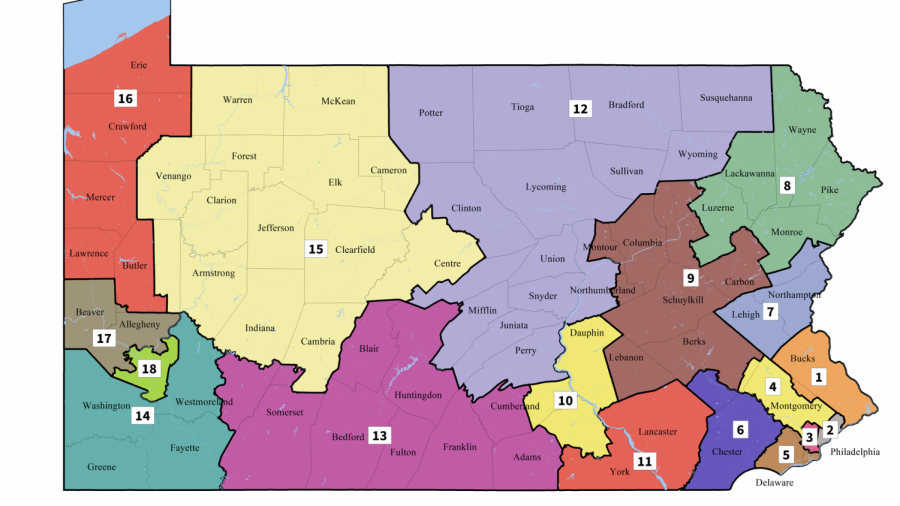What’s at Stake: the Midterm Elections
November 5, 2018
As I drive down Route 19 just a day before the Midterm Elections, I see nothing but signs, emblazoned with Emily Skopov for PA, Mike Turzai for State Representative, Jeremy Shaffer against Socialists, and Women for Tom Wolf. Messages from Lou Barletta and Tom Wolf and Keith Rothfus and Conor Lamb fill the advertising gaps during primetime, almost making you want to turn off the television altogether.
But as annoying as these ads are, the midterm elections are actually incredibly important, even more so than presidential elections. They determine the demographics of power within our nation as they attempt to accurately represent us. Throughout all of this, an important trend to acknowledge is that midterm elections almost always favor the opposing party of the incumbent executive. In 2018, they’re calling this the “Blue Wave.”
A recent SNL skit even spoofed the legitimacy of this “Blue Wave”, showing Democrats fearful of potentially losing even more power in a Republican administration. Polling, along with general displeasure (52.7% disapproval of President Donald Trump, to be exact), pushes people to vote blue. But there’s been some contention.
See, all 435 seats of the House of Representatives are up for grabs, whereas only 35 seats of the Senate are up. And, these 35 seats are up in places that are conservative, such as Indiana, Missouri, Montana, North Dakota, West Virginia, Florida, Ohio, Wisconsin, Michigan, and, you guessed it, Pennsylvania.
Many of these states have large rural populations, leading to a more conservative voting base that’s more likely to go for Trump-backed candidates. Though we live close to the diverse, blue city of Pittsburgh, much of Pennsylvania between us and Philadelphia is rural and would vote for candidates that have similar values. States in the Rust Belt, including Michigan, Ohio and Wisconsin, have large populations who want to elect Senators who promise to revive the manufacturing industry in their region. And, those senators? They’re prominently Republican.
All in all, Republicans have a huge advantage in Senate elections. While they’re defending 9 states, the Democrats have 24 seats up. It’s a huge margin that seems difficult to beat. In fact, FiveThirtyEight states that Democrats face the most unfavorable Senate map in 2018 than in any election ever.
On the other hand, the House of Representatives could prove successful for the Democrats. In order to understand them, we must analyze the five social and cultural battlefields that could determine the results.
For one, booming cities, where a more diverse population of Hispanic and Asian-American communities live, pose an imminent threat to President Trump’s administration. Regions outside of major cities, such as Denver, Houston, and Miami, are known for high levels of education and enormous diversity. These places very much reflect what Allegheny County may look like in several years.
Then comes the outer suburbs, where former conservative strongholds are slowly becoming moderately Democratic. Though some certainly support President Trump for his business proposals or his conservative social views, many are frustrated with GOP and the administration as a whole and aim to retaliate.
Next, the agrarian districts, especially those in states like California, Arizona, Montana, and New Mexico. While they have maintained steady Republican majorities, many of President Trump’s policies on immigration and trade have struck a chord with these voters, who feel disenfranchised.
As I mentioned earlier, rural regions have contributed to the Trump craze, as they have continually felt excluded by liberal elitism. Democrats have trouble competing against populist candidates have elected and fuel President Trump. Many of these regions will most likely vote for Conservative candidates purely based on ideology. It’s simple: we look for people who think like us, and it can be very hard to change that.
Finally, we must look at wealthy suburbs, among which is our own district, Pennsylvania’s 17th. We hold many of the same characteristics of similar regions across the country: educated, White professionals who voted for Mitt Romney, but are ultimately unlikely to support Donald Trump. They enjoy the lower taxes and limited government, but dislike the president’s controversial persona. Though they prefer not leaning left, they would be more likely to support Conor Lamb, a moderate in terms of economic and social issues.
As important as national politics are, the local elections are infinitely more so. While Donald Trump sits in the White House and makes decisions about the country as a whole, the local politicians make the decisions that affect you the most. Despite this, names like Mike Turzai, Emily Skopov, Lindsey Williams, and Jeremy Shaffer sit forgotten at the bottom of the ballot. But, they have the most important say in your life, and it’s necessary to know who you’re voting for this Tuesday.
***
For a closer look at the candidates’ platforms, read our earlier round-up of your options in tomorrow’s election.












